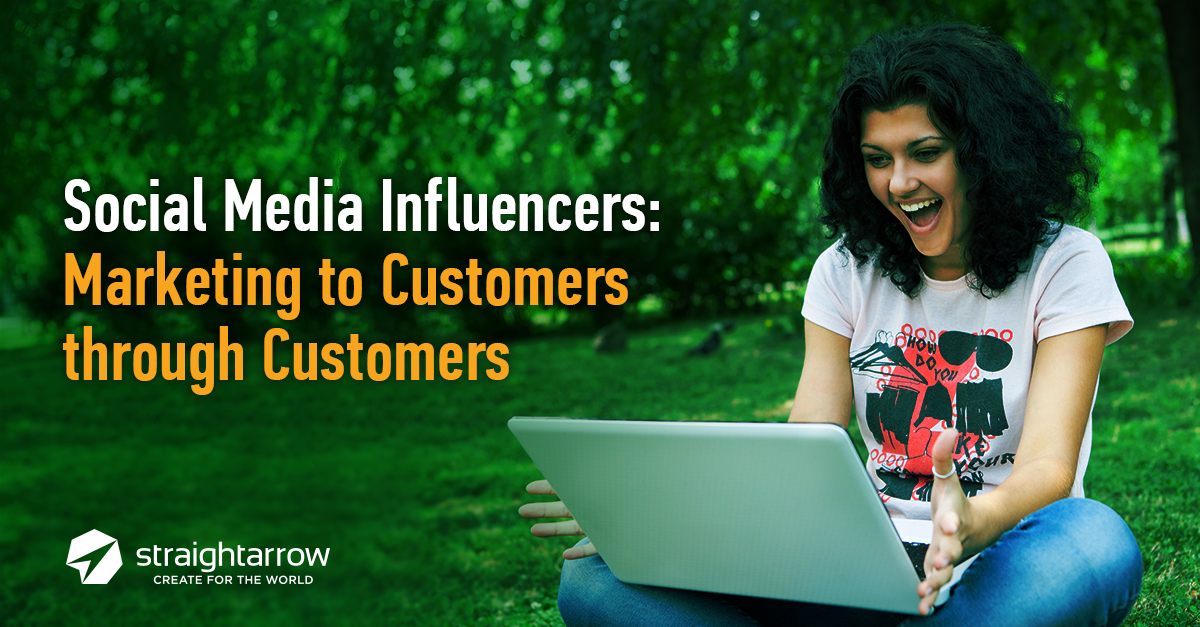4 Ways to Humanize Your Social Media Strategy for Customer Delight

Have you ever decided to buy a product because it was highly recommended by the YouTube vlogs you follow? Or what about a time when you opted not to avail of service because you saw bad reviews left by customers on the company’s Instagram feed or a low rating via their Facebook page?
The thing is, customers are the lifeblood of businesses. What they say about you has a significant impact on your success. This is especially true today since almost everyone can be found online and just one social media post can either make or break your brand.
Each of the scenarios shared above demonstrates the importance of establishing a good customer feedback mechanism for your brand. The idea is to delight your customers to make sure they feel valued and keep coming back—because they’ll eventually bring in new people for your business with them.
Conversely, leave them unsatisfied and it’s easier for these customers to influence the opinion of other people against your brand.
But how do you create or stimulate customer delight on social media?
This question was answered during the third 2019 Manila HubSpot User Group (HUG) gathering held last October 27, 2019.
Hosted by StraightArrow Corporation, GetCre8tive Corporation, and Commune Cafe, the event centered on delighting customers through social media.
The speakers covered best practices when responding to negative feedback, as well as how you can use HubSpot to create a social media feedback and advocacy program.
Humanizing social media
The event headlined one of the pioneers of social media in the Philippines—Ros Juan—who shared some powerful insights when delighting customers:
“If there’s one thing I want you to remember about managing brands, it’s to keep it human. People appreciate brands that they can relate to, that they have talked to [just like a normal person].”

Ros gives practical advice to marketers on how to manage a brand’s social media presence. Photo by Ica Felipe.
Being human is one of the musts in any inbound marketing strategy, and this is what the HUGs advocate. Inbound is a methodology that’s not only human but also unintrusive. It’s being helpful and holistic—which then results in customer delight.
To make your social media come across as human and helpful, Ros stressed that it’s important to manage negative feedback the right way. This means making an effort to take care of the relationship you have with your customers.
Ros advised that while you may need to answer as soon as possible, these responses shouldn’t be simply reactive, especially when it’s to a less-than-desired comment.
She recommends stepping away from the keyboard to ease any tension before writing a reply. Ros also emphasized the importance of putting yourself in the shoes of your buyer and asking yourself how you might feel if you encountered a similar situation. Use your insights to guide how you craft a human and helpful response.
She also shared the following reminders and tips to HUG attendees:
- Keep your responses short, simple, and straightforward.
- Use positive language. Say “I apologize for your less than satisfactory experience” instead of “sorry you had a horrible experience with us.”
- Proofread before hitting send. It can also help to have another person do a diplomacy check on your tone.
Ros also mentioned that sometimes negative feedback isn’t intended as an attack. These kinds of feedback should be taken as constructive criticism, so it’s a must that those who manage social media accounts read these messages carefully and critically before responding.
Acknowledge your customer’s concerns, investigate what happened, and let them know that you’re working to resolve the issue.
Additionally, while it’s always best to resolve concerns within 24 hours, keep in mind that a little bit of delay is better than no reply at all.
More on responding to negative feedback
Aside from Ros, Manila HUG leader and StraightArrow’s Head of Digital Marketing, Chloe Villanueva, also shared insights on handling negative feedback on social media.
Chloe shared an instance where StraightArrow handled negative feedback directed at one of their clients, a makeup brand, a few years ago.
The company had released a product that was very similar to another brand's product. Upon the product’s launch, people on social media noticed this similarity and the negative comments poured in, eventually blowing up into a big social media crisis.
Rather than getting frustrated over the comments, the StraightArrow social media team chose to take a breather, monitored all the comments that they were receiving, and categorized them into four categories:
- General feedback
- Items that require further investigation
- Concerns that could be addressed by specific features
- Issues and complaints that needed to be escalated

Manila HUG Leader Chloe Villanueva shares her story on responding to negative feedback on social media.
Photo by Ica Felipe.
From there, the team crafted responses to show that the brand was both aware of and already taking action on the issue.
Here are some ideas for the templates the team created and shared during the HUG:
- When responding to general negative feedback, our team recommends acknowledging the response and responding in a way that redirected them to the edge of the product over its competitors.
- For feedback that needs further investigation, the team recommends responding publicly and inviting the customer to move the exchange to private messages so that we can learn more about the issue.
- If customer feedback is something a specific product or feature can address, it’s best practice to redirect customers to these products or features.
- Finally, in cases where resolving the issue is out of your social media team's hands, it’s best to raise the issue to the department that can help. One way to do this is to advise the customers that the concern has been raised to HQ and you’ll keep them in the loop for any updates or progress about it until the issue has been resolved.
Your social media page is, in effect, an extension of your customer support team. Establishing standard procedures and templates for responses will help you handle negative feedback effectively and delight your current customers.
Creating a feedback and advocacy program
Delighting customers on social media is more than just knowing how best to respond to negative comments.
It’s also about encouraging your current customer base to advocate your brand and provide you with social proof.
But how do you go about this?
Trisha Chua, one of StraightArrow’s team leaders and resident social media experts, took the floor to discuss how to create a customer feedback and advocacy program on social media.

StraightArrow’s Social Media Team Leader Trisha Chua happily shares her knowledge on creating customer feedback and advocacy program. Photo by Ica Felipe.
HubSpot has its own advocacy program called HubStars.
It’s a 5-step repeatable process that you can follow to make sure that your service delivery processes are working and provides an opportunity for you to partner with your happiest and most passionate customers.
1) Identify customer happiness levels.
You can do this through any of the following methods:
- A Net Promoter Score (NPS) is a customer satisfaction benchmark that measures how likely your customers are to recommend you to others.
- Social Media Monitoring means following hashtags relevant to your business and your competitors so that you’re actively aware of both customers and the industry’s pulse.
- Customer-facing Teams. No one knows your customers better than the people who talk with them regularly—these people are your implementation specialists (and you might also know them as your support team). Leverage these teams to understand customer sentiment better.
2) Convert unhappy customers into happy ones
During her talk, Trisha reiterated what Ros and Chloe shared previously:
Negative feedback isn’t always a bad thing; it’s also an opportunity for you to improve.
When turning negative feedback around so you can garner brand advocates, Trisha echoed the following tips from HubSpot:
- Acknowledge customer feedback
- Address their concerns
- Reach out to get more context (preferably offline or through private channels)
And of course, Trish reminded everyone that putting your best foot forward and being polite to your customers is crucial.
3) Ask happy customers to advocate for you
Establish your authority with support from your happy customers who are also industry experts. They can help accelerate your flywheel. These people are in the communities relevant to your brand. They might blog a lot or have a bunch of social media followers.
That said, Trisha did remind attendees that although some customers willingly advocate for your brand, it’s best to reward them. You can do this through discounts, early access to new products, limited-time offers, and more!
4) Market the content you get from happy customers
Your happy customers’ comments can serve as authentic content for your brand. You can repost these on your social pages, write blogs or articles inspired by them, or create case studies.
5) Show Return of Investment (ROI)
Lastly, for any marketing program, it’s important to show your ROI.
For HubStars, you can do this by measuring deals, referred leads, or data on upsell/cross-sell.
Manage your social platforms through HubSpot
Before gathering customer feedback on social media, it’s important to look at how you manage your accounts. Since this involves publishing regular content, you need to use tools that will help you do just that.
Ri Ranjo, one of StraightArrow’s Social Media Specialists, shared practical tips on HubSpot’s social media tools for publishing content, monitoring the different platforms, and of course, generating reports.

StraightArrow’s Social Media Specialist Ri Ranjo teaches how to use HubSpot social media tools. Photo by Ica Felipe.
HubSpot’s publishing tools allow you to manage your social networks and build your marketing campaigns on one platform.
This social publishing dashboard displays all scheduled and published posts from your account.

Screenshot of HubSpot’s publishing tool.
Meanwhile, HubSpot’s monitoring tool lets you see all your interactions. It’s a place where you can create custom keyword monitoring streams for everyone on your team to see the topics your customers care about.
Additionally, you can also use it to reply directly to customers for posts published through the platform.

Screenshot of HubSpot’s monitoring tool.
Finally, HubSpot’s reporting tools make it possible to view and analyze key performance indicators (KPIs) for your social media efforts.
It also includes multiple social reports including data on audiences, published posts, interactions, clicks, share impressions, sessions, new contacts, and top posts.
#GrowBetter with Social
Social media is a powerful tool that connects brands with consumers. It helps us automate the content we create and serves as another avenue for communication.
But at the end of the day, these social platforms are there to help us reach customers better because they hold the key to a business's success.
Craft effective customer feedback and advocacy programs on social media and delight your customers with support from certified social media specialists.
Get in touch, we're here to help.








Comments